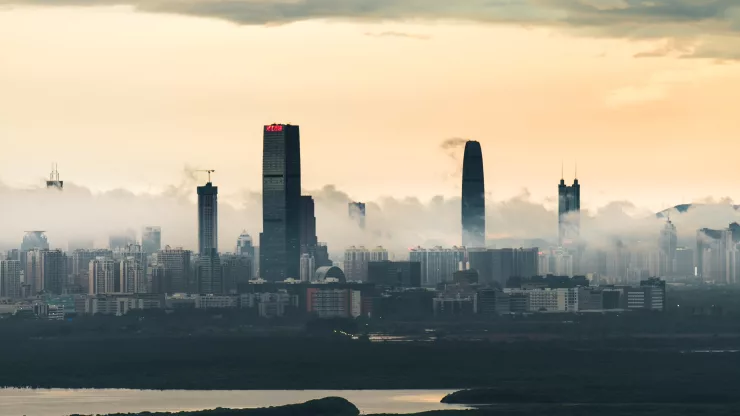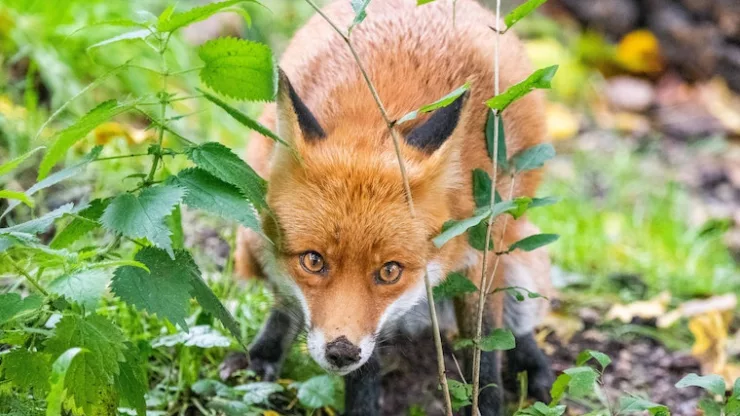Cities may seem like concrete jungles, but they are also home to a surprising amount of nature. One of the often-overlooked natural treasures of cities is urban wetlands.
These wetlands are not only beautiful but also provide numerous benefits to the environment and the people who live nearby.
In this article, we will explore the importance of urban wetlands and the threats they face, as well as the strategies for managing and protecting them.
Jump to Section
Introduction
Wetlands are important ecosystems that provide numerous benefits to the environment and society.
Unfortunately, many wetlands around the world are disappearing due to urbanization, pollution, and other human activities.
However, there is hope for the wetlands that exist in cities.
Urban wetlands are biodiversity hotspots that provide a range of benefits to the environment and people who live nearby.
The Importance of Urban Wetlands: A Biodiversity Hotspot in the City
What are Urban Wetlands?
Urban wetlands are wetland areas that are located within or near cities. They can be natural or artificial, permanent or temporary, and freshwater or saltwater.
Urban wetlands can take many forms, including ponds, lakes, rivers, and estuaries.
The Benefits of Urban Wetlands
Urban wetlands provide numerous benefits to the environment and people who live nearby. Here are some of the most important benefits:
Flood Control
Urban wetlands can absorb and store large amounts of water, which can prevent flooding during heavy rain events.
Wetlands act like sponges, soaking up water and slowly releasing it back into the environment.
This can help to reduce the risk of flash floods and other types of flooding.
Water Purification
Urban wetlands can help to purify water by filtering out pollutants and nutrients.
Wetlands are natural water treatment systems that can remove harmful substances from water before it enters rivers, lakes, and other water bodies.
Climate Regulation
Urban wetlands can help to regulate the climate by absorbing carbon dioxide and other greenhouse gases.
Wetlands are also important habitats for many species of plants and animals, which can help to maintain biodiversity and support the ecosystem.
Recreational Opportunities
Urban wetlands can provide opportunities for recreation, such as hiking, birdwatching, and fishing.
These activities can help to promote physical and mental health, as well as provide opportunities for education and community engagement.
Threats to Urban Wetlands
Urban wetlands face a range of threats, including:
Urbanization
As cities grow, they often encroach on wetland areas, which can lead to the destruction and fragmentation of these ecosystems.
Urbanization can also lead to increased pollution and other negative impacts on wetland areas.
Pollution
Urban wetlands can be impacted by a range of pollutants, including chemicals from industrial facilities, fertilizers and pesticides from agriculture, and waste from urban areas.
These pollutants can harm the plants and animals that live in wetlands and can also impact the quality of the water.
Invasive Species
Invasive species can also pose a threat to urban wetlands.
These species can outcompete native species for resources and can disrupt the balance of the ecosystem.
Invasive species can also impact the quality of the water and the overall health of the wetland.
Managing Urban Wetlands
To protect and manage urban wetlands, a range of strategies can be used, including:
Conservation Strategies
Conservation strategies can include habitat restoration, protection of wetland areas, and the creation of new wetland areas.
These strategies can help to maintain biodiversity and support the ecosystem services provided by wetlands.
Restoration Projects
Restoration projects can include the removal of invasive species, the planting of native species, and the restoration of degraded wetland areas.
These projects can help to improve the health of the wetland and support the recovery of the ecosystem.
Examples of Urban Wetlands
| City | Wetland Area | Description |
|---|---|---|
| New York City | Jamaica Bay Wildlife Refuge | A 9,155-acre wetland area that is home to over 300 species of migratory birds |
| London | Walthamstow Wetlands | A 211-acre wetland area that provides habitat for a range of wildlife, including otters and water voles |
| Sydney | Sydney Olympic Park Wetlands | A 120-hectare wetland area that provides habitat for over 150 species of birds |
Protecting Urban Wetlands for a Sustainable Future
Urban wetlands are important ecosystems that provide numerous benefits to the environment and people who live nearby.
However, these ecosystems face a range of threats, including urbanization, pollution, and invasive species.
To protect and manage urban wetlands, conservation strategies and restoration projects can be used.
By working together to protect these important ecosystems, we can create a sustainable future for ourselves and the natural world.
FAQ
What is a wetland?
A wetland is an area of land that is saturated with water, either permanently or temporarily. Wetlands can take many forms, including swamps, marshes, and bogs.
What are the benefits of wetlands?
Wetlands provide numerous benefits to the environment and people who live nearby. These benefits include flood control, water purification, climate regulation, and recreational opportunities.
How can we protect wetlands?
Wetlands can be protected through conservation strategies and restoration projects. These strategies can help to maintain biodiversity and support the ecosystem services provided by wetlands.
I’m a nature enthusiast and creator of Metro Wilds and have spent years exploring the great outdoors.
With a passion for environmental conservation and sustainability, I have dedicated my career to writing about the beauty and wonders of nature, as well as the threats facing our planet.
Contact me at [email protected] for assistance.





